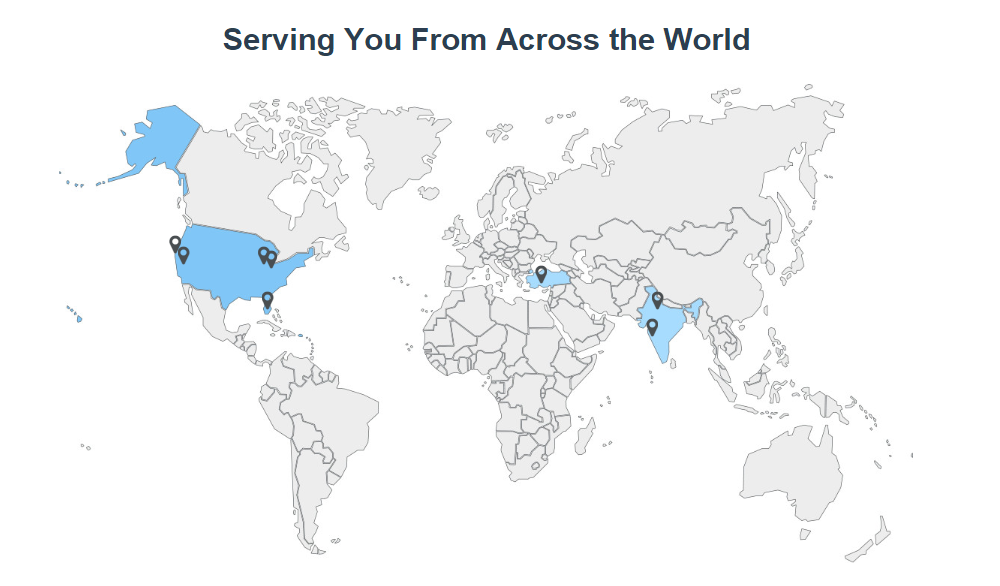
I’ve been doing a lot of research into remote teams / distributed teams / virtual teams, whatever you want to call it. Surprisingly, there are awesome companies that pay hourly wages and awesome companies that pay salaried wages.
The Argument for Hourly Pay
Some of the companies that pay remote workers by the hour include Hubstaff and 237 Marketing + Web. These are small to mid-sized companies that work within distributed teams. Hubstaff’s team is 100% remote, with their two co-founders both living in the same city. 237 Marketing + Web’s team is largely remote, but they do have a physical office.

Dave Nevogt of Hubstaff says in his book on managing remote teams, “I believe the best and most efficient way to build your business is to get contractors, not full-time employees.”
Hourly pay for remote workers is great because it ensures fair trade on both sides. Employers pay only for what work is done and employees only charge for hours they spend on that particular client. It also gives everyone another metric (time) to measure performance against, without requiring employees to come into an office and forcing them to spend X amount of hours on a task.
With the hourly pay scheme, employers won’t be pressured to get employees “busy work” and your business can focus on tasks vs. roles. For example, if you need a lot of coding done one week and none the next, you won’t have to worry about filling your programmer’s time with other tasks.
A potential con in hourly work is that some remote employees may purposefully take more time completing tasks in order to get paid more. Using work monitoring software is a great way to identify these employees so you can eliminate them from your team. For example, I make sure my Hubstaff activity levels never fall below 70% and I find that I regularly hit the high 80s to 90s, indicating I’m working at high levels throughout the time I track and am paid for.

In my experience
I have two clients that pay me hourly, and we use an automated process so that I track time and am paid automatically every week for whatever time I log.
I actually like hourly pay because it means I avoid the remote work “guilt” that Scott Hanselman so eloquently describes in this article.
“I propose that most remote workers work at least as hard, if not more so, than their local counterparts. This is fueled in no small part by guilt and fear. We DO feel guilty working at home. We assume you all think we’re just hanging out without pants on. We assume you think we’re just at the mall tweeting. We fear that you think we aren’t putting in a solid 40 hours (or 50, or 60).”
If it only takes me 20 minutes to complete a task, I don’t want to sit at my desk for another 10 minutes looking for work to do because I feel bad about getting paid without doing anything. I’d rather stop my timer, call it a day and go out and enjoy myself.
Tracking my time with Hubstaff has made this process incredibly easy. I recommend it for any contractors working with multiple clients – it improves accountability, helps provide proof of work, and allows you to monitor your progress and productivity.
The Argument for Salaried Pay
A few companies that pay remote workers a monthly salary include Buffer and Zapier. Buffer has actually made their salary formula public, allowing everyone who is interested to see how they calculate how much each person at Buffer makes. Both of these teams are completely remote and meet up regularly every year.

Paying your distributed teams by salary allows them to focus on their work instead of tracking time. It gives your entire team the freedom to get their work done however they want, and encourages them to work at their own pace. Paying a salary also gives an incentive to work quickly, just remember to pay attention to the quality of their work and make sure it is up to par.
Salary work also allows you to focus on the output of your teams versus how much time they spend working. In this article by 99u, Oliver Burkeman tells us that people have a tendency to think someone who spent more time on a task is perceived to have worked harder, even if the outcome is the same.
“Psychologists have long noticed what’s sometimes been called the “labor illusion:” when it comes to judging other people’s work, we might say we’re focused only on whether they did the job quickly and well—but really we want to feel they wore themselves out for us.”
You can read more about the labor illusion as applied to travel websites and load times here.
Salaried pay removes this criteria with which we may unknowingly (and unfairly) judge, and allows managers to evaluate work based solely on outcome.
In my experience
I have two clients that pay me on retainer, which is similar to having a salary. I get a set amount of money every month for however many projects they send my way. This way of being paid is easy because it’s consistent and reliable.
What I’ve noticed is that when a client on retainer sends me work, I do it within the day. This is because my work is the only thing they have to judge me on, so I want them to rest assured that I am doing it.
I don’t think I work harder for clients on retainer, but I think I may work a little faster for them, hopefully without sacrificing quality.
What do you think?
If you are a manager, would you prefer to pay your team hourly or salary? And if you are a remote worker, how do you prefer to bill clients? Let me know in the comments below!
Disclaimer: Hubstaff is one of my clients and I use them in my own business. This post was not sponsored and I was not compensated in any way by them for writing it. (Unless you sign up for Hubstaff using this link, and even then they would only see that you visited their website from my website.)